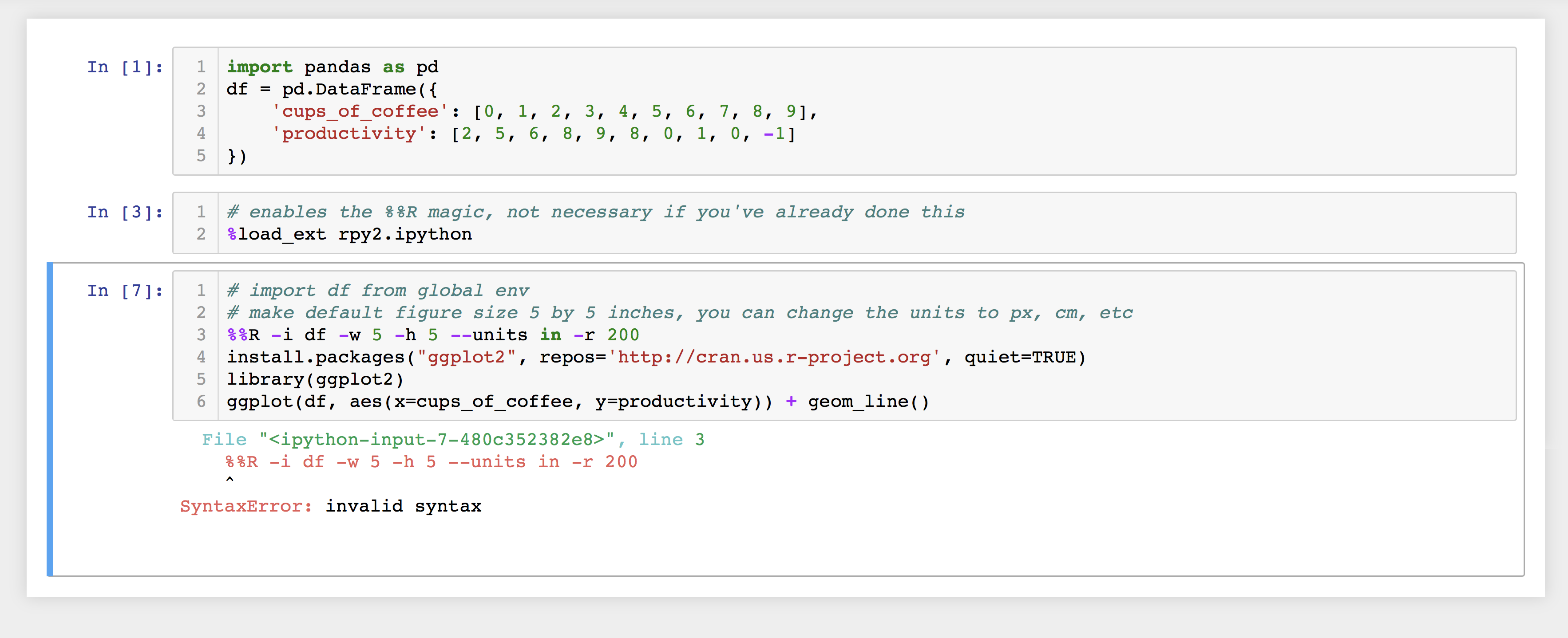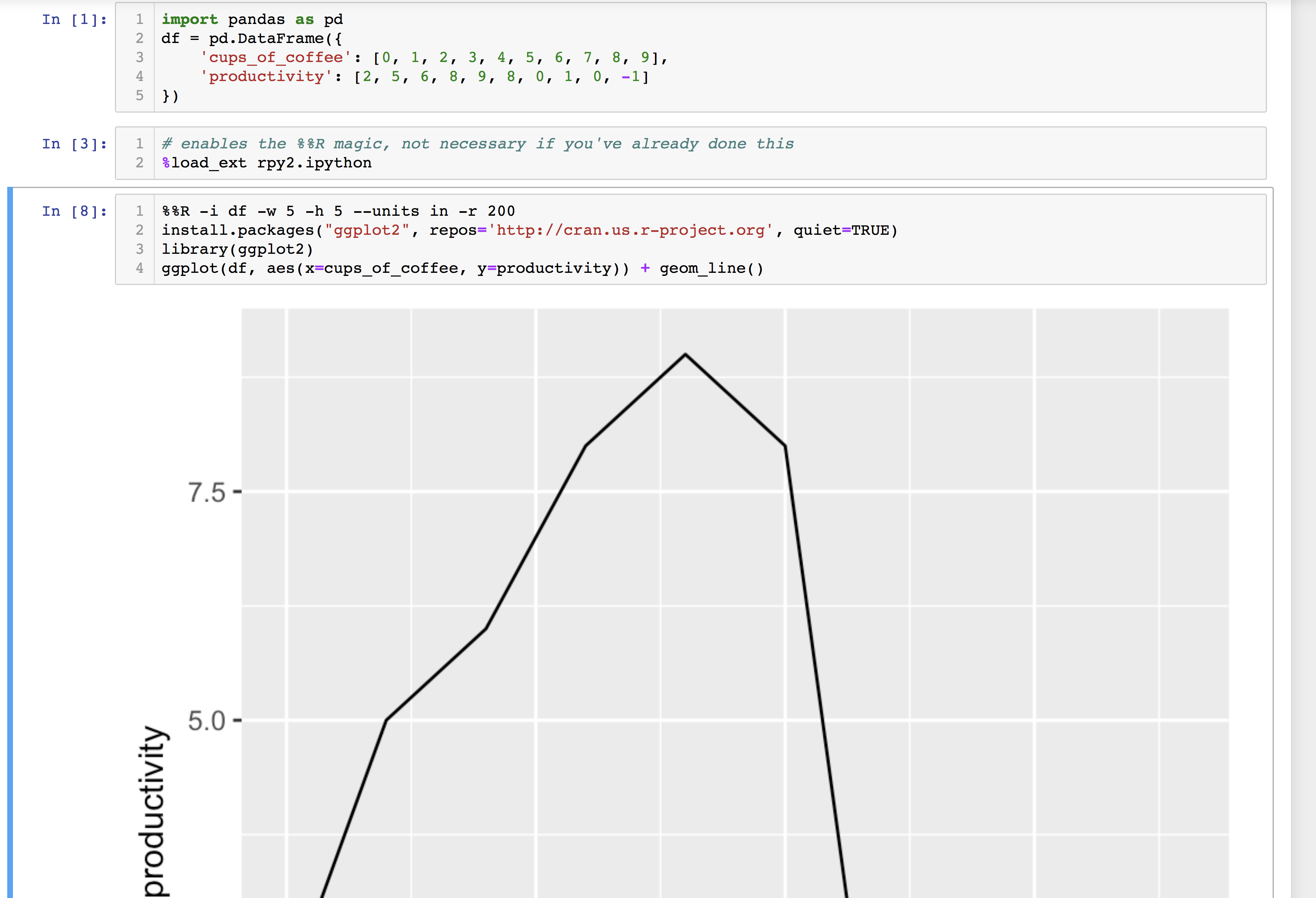Yes, it is possible! Use rpy2.
You can install rpy2 with: pip install rpy2
Then run %load_ext rpy2.ipython in one of your cells. (You only have to run this once.)
Now you can do the following:
Python cell:
# enables the %%R magic, not necessary if you've already done this
%load_ext rpy2.ipython
import pandas as pd
df = pd.DataFrame({
'cups_of_coffee': [0, 1, 2, 3, 4, 5, 6, 7, 8, 9],
'productivity': [2, 5, 6, 8, 9, 8, 0, 1, 0, -1]
})
R cell:
%%R -i df -w 5 -h 5 --units in -r 200
# import df from global environment
# make default figure size 5 by 5 inches with 200 dpi resolution
install.packages("ggplot2", repos='http://cran.us.r-project.org', quiet=TRUE)
library(ggplot2)
ggplot(df, aes(x=cups_of_coffee, y=productivity)) + geom_line()
And you'll get your pretty figure plotting data from a python Pandas DataFrame.
You also have access to R objects (e.g. data frames) from Python cells:
import rpy2.robjects as robjects
robjects.globalenv['some-variable-name']
To view the names of all available variables use:
list(robjects.globalenv.keys())
Details are explained here: Pandas - how to convert r dataframe back to pandas?


